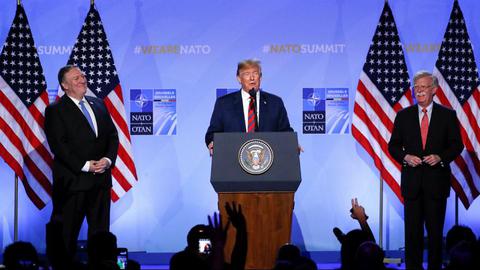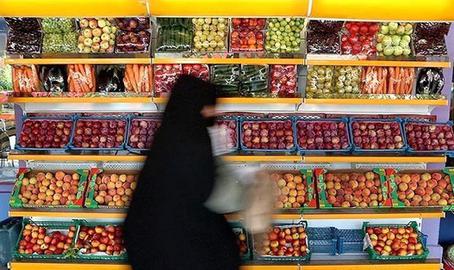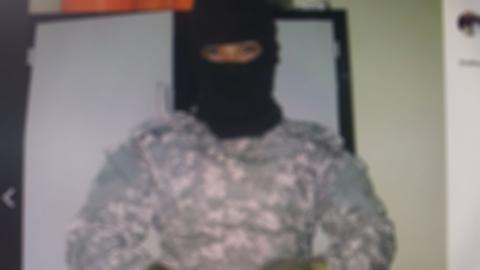As Iran’s currency continues to fall in value and as economic challenges continue to mount, Iranians are bracing themselves for yet another hike in inflation.
But this time, they are not sure if they will survive it.
Mrs. Esfandiary is a 61-year-old housewife who retired from her job at the Post and Telecommunications Office some years ago. Last week, she returned from grocery shopping, opened the door to the building where she lives with her husband and daughter, and went upstairs to her flat on the second floor. Half an hour passed before she remembered she had left her bag of groceries by the entrance. She went downstairs to collect her shopping — a few pounds of rice, a container of cooking oil and a few other food items. But Mrs. Esfandiary’s shopping bag was gone.
A review of the building’s security video showed a small truck stopping outside a few minutes after she had left the bag. A lean man got out of the truck, looked around and then grabbed the shopping.
The man looked ordinary, like hundreds of other truck drivers who make deliveries and transport furniture and other household items. Mrs. Esfandiary was shocked. “This was just a little shopping, why did he have to pick it up? Is it because he needed it?”
Many would say the driver had found a little treasure trove. As prices for everyday goods rapidly increase, with food items in particular becoming more expensive, Iranians are increasingly worried and face hard choices — particularly the elderly and those with a fixed income.
Mr. Afshar, a retired teacher, is receiving treatment for an aggressive case of cataracts. The cost of his medication has increased by 250 percent in less than two months. He wonders why the prices are increasing. “Didn’t the government allocate foreign currency at a special exchange rate to control the prices?” Despite this measure, medication prices are still on the rise. Sahar, 27 years old, is undergoing chemotherapy for breast cancer, and spends 10 million tomans on various medications. This is the equivalent to just under US$1000, but as a designer, she barely makes 1 million toman a month — less than $100. She can’t afford treatment without help from her parents.
Many patients are forced to choose between their medication and their food. Since the government has failed to control the price of medication, a black market for medical supplies has already emerged.
But prices are not just increasing for medicine, medical supplies and food. Since President Rouhani was elected to his first term in spring 2013, the Consumer Price Index (CPI) has increased by 87 percent. On average, households are paying 87 percent more for everyday goods and services. The country’s money supply has increased by 230 percent as the government continues to borrow from the Central Bank of Iran (CBI), adding to the problem of liquidity in Iran’s markets and making them highly volatile. Though it would appear people have more money to spend, this is nominal. In reality, cash is losing its value to inflation. As more money is printed, inflation increases. Although this is not a new situation — all Iranian governments have borrowed from the Central Bank to pay for the commitments they have made — the current situation is more critical than it has been since 2012, during the height of the last sanctions.
Corruption, Sanctions, Mismanagement — And a Controversial New Law
Printing money does not create economic growth. For the newly-printed money to be actually useful an economy needs more trade, more jobs, more production. When the economy is not growing as fast the money supply is, people have to spend more money on the same products they have previously bought for less. The nominal prices increase to push down their real income. The imbalance between economic growth and inflation and the increase in the money supply means that Iran’s economy can expect another 50 to 60 percent increase in its CPI in the coming months.
There have been different reports on inflation, but they all register an increase in the inflation rate. The Central Bank of Iran reports that in July 2018, prices increased by 10.2 percent compared with the previous year. It is predicted that, by March 2019, the rate of inflation will reach 25 percent. Many consider the CBI’s July estimates the last before the coming inflationary wave. Prices are rising, hurting Iran’s most vulnerable and disadvantaged individuals and groups the most. Those with fixed income are experiencing a sharp decline in their real income, as they can afford less and their savings lose value. Some groups of workers and retirees have not received their benefits or pay for months. They stage demonstrations to make their grievances known, but to no avail.
The Iranian government is already dealing with the aftermath of the United States’ unilateral decision to leave the Joint Comprehensive Plan of Action (the nuclear deal). It must pay for damages brought about by the activities of unlicensed financial institutions founded by (and benefitting) the regime’s affiliates and cronies. For many Iranians, an increase in inflation feels like a tax increase the government has imposed to pay for others’ mistakes and choices.
But it’s the decades of economic mismanagement and corruption that is to blame for the Iranian people’s increasing vulnerability as the value of their savings declines rapidly.
Instead of addressing corruption and economic mismanagement, Iran’s executive and legislative branches debate the need for a new law banning public companies and government agencies from hiring retirees. The motion was tabled by MPs from both conservatives and reformists in response to increasing criticism that only a certain number of individuals work in executive or administrative positions. Tragically, as retired people in Iran lose their income to inflation, they need to re-enter the job market. People feel the government has abandoned them, and as though no one is paying attention to the mounting living expenses and increase in poverty. However, no one has discussed why, instead of hiring new people, the entire retiree population must become disenfranchised.
Mr. Afshar has calculated that his savings will cover the cost of his treatment for another six months, but after that he will need medication at discounted prices, and for his insurance company to pay the bills. Otherwise, he will need to choose either his eyesight or food for his family. “Do you think the government will do something, anything?” he wants to know.
As the government faces serious political challenges — on August 28, President Rouhani faced a grilling in parliament, with dozens of parliamentarians registering their dissatisfaction with the way his administration has dealt with the economic crisis — it is hard to believe it will be in a position to adequately address the mounting economic issues. Iranians know the situation in Tehran is approaching a gridlock. That is why they fear the future. And as their fear grows, prices continue to rise.
visit the accountability section
In this section of Iran Wire, you can contact the officials and launch your campaign for various problems


























comments